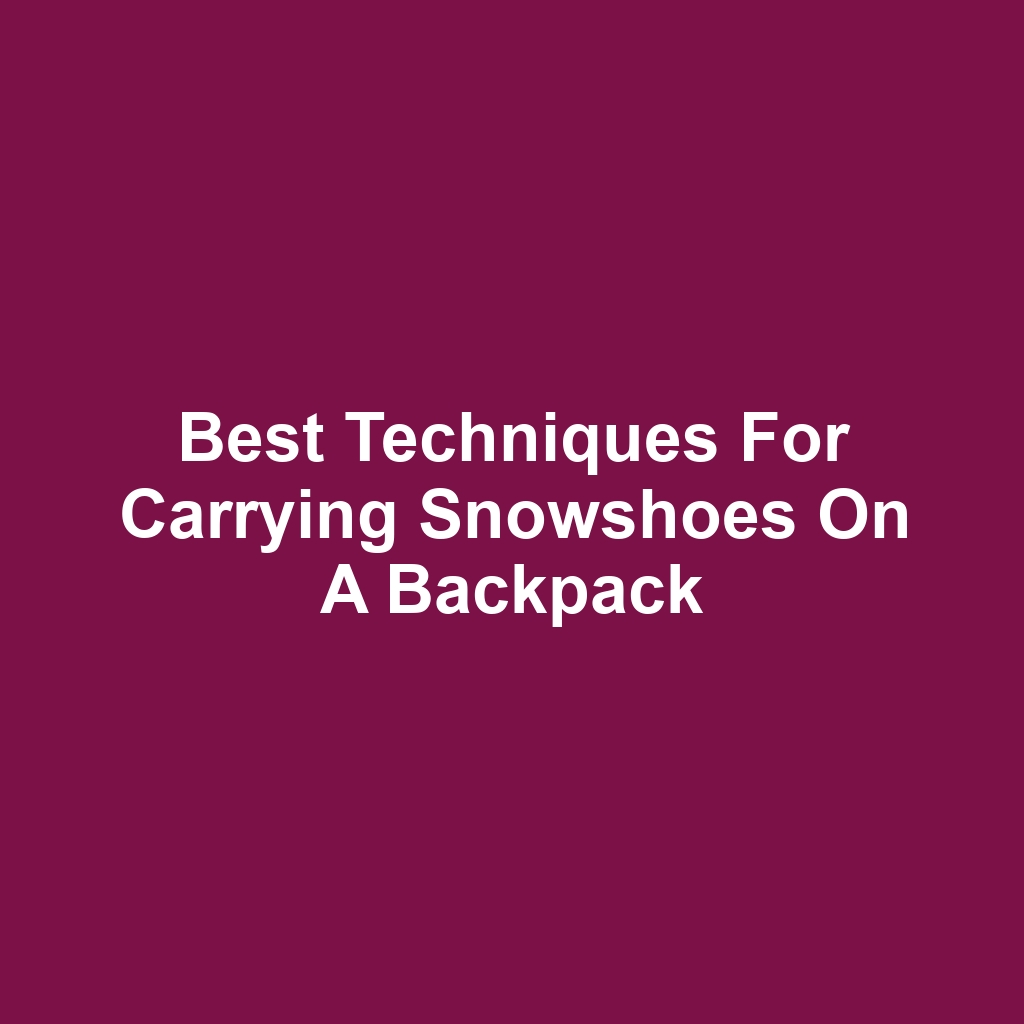When I first started snowshoeing, I quickly realized that learning how to carry snowshoes on a backpack was just as important as mastering the technique itself. I’ve tried various methods over the years, and I’ve found that the right straps and placement can make all the difference in comfort and balance. It’s essential to keep your gear secure while ensuring it doesn’t throw off your center of gravity. With a few simple tips, I’ve managed to hike longer distances without feeling weighed down. Join me as I share the best techniques I’ve discovered for carrying snowshoes effectively on your backpack.
Choosing the Right Straps for Snowshoes
Choosing the right straps for my snowshoes makes a huge difference in how comfortable I feel during my hike. I’ve tried different materials and styles over the years. Some straps are too rigid and dig into my shoulders, while others slip and slide around. I’ve found that adjustable straps are a game-changer for maintaining a secure fit. When the straps are easy to tighten, I can focus more on enjoying the scenery. I’ve also discovered that padded straps help reduce pressure points. The color and design don’t matter much, but durability is crucial for me. I always make sure the buckles are reliable and won’t break under stress. Having the right straps truly enhances my overall experience.
Optimal Placement Techniques for Balance
I’ve found that placing the snowshoes horizontally at the top of my backpack helps maintain balance during my hike. It keeps the weight evenly distributed and prevents any awkward shifting. When I secure them tightly, I notice less chance of them bouncing around. I also prefer to keep the bulk of my gear lower on my back, allowing for better center of gravity. If the snowshoes are too close to my head, I feel off-balance. I’ve experimented with different angles, but horizontal seems to work best for me. Another technique I use is to attach them with the bindings facing outward. This way, I avoid snagging on branches or other obstacles. Ultimately, it’s all about finding what feels most comfortable and secure while I’m on the trail.
Tips for Maintaining Comfort While Hiking
Maintaining comfort while hiking means making sure my backpack is adjusted properly to distribute the weight evenly. I always check the straps to ensure they’re snug but not too tight. It’s important that the load sits high on my back to avoid straining my lower back. I tend to wear moisture-wicking clothing to stay dry and comfortable throughout the trek. Hydration is crucial, so I keep a water bottle easily accessible. I make sure to take regular breaks to stretch and relieve any tension. Using trekking poles helps me maintain stability and reduces the impact on my joints. I also pay attention to the weather and dress in layers to adapt as needed. Lastly, I listen to my body and adjust my pace when I start to feel fatigued.
Frequently Asked Questions
What are the different types of snowshoes available for hiking?
When it comes to hiking, I’ve come across a few different types of snowshoes that really cater to various needs. There are traditional wooden snowshoes, which I find are great for deep snow but can be a bit heavy. Then there are modern aluminum frame snowshoes that are lighter and easier to maneuver on packed trails. Finally, I’ve seen some specialized snowshoes designed for running or racing, which are sleek and built for speed.
How do i clean and store my snowshoes properly?
To clean and store my snowshoes properly, I usually start by rinsing off any dirt or snow with water. I make sure to dry them thoroughly before putting them away, as moisture can cause damage. For storage, I keep them in a cool, dry place and avoid stacking heavy items on top of them. This way, I’m ensuring they stay in good condition for my next adventure.
What should i wear while snowshoeing to ensure safety and warmth?
When I go snowshoeing, I always make sure to wear layers to stay warm and comfortable. I usually start with a moisture-wicking base layer, then add an insulating layer like fleece, and finish with a waterproof and windproof outer layer. I also choose insulated, waterproof boots to keep my feet dry and warm. Lastly, I don’t forget to wear a hat and gloves, since keeping my extremities warm is crucial in cold weather.
If you’re interested in maintaining your outdoor equipment, you might want to check out the webpage on the best tools for cleaning cedar shake roofs. This resource offers valuable insights and tips that can enhance your home maintenance skills. Visit this link for more information!
